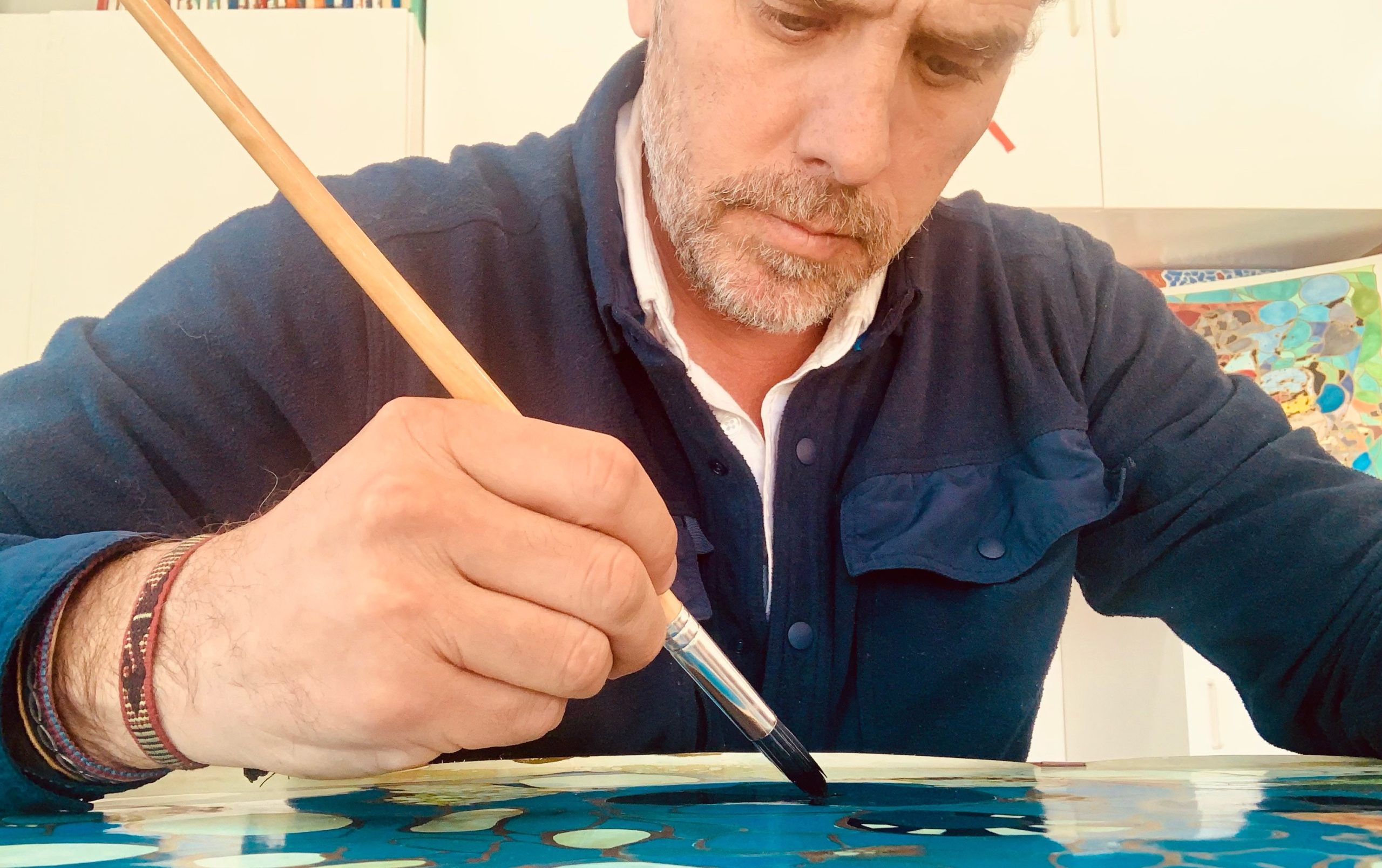We should all be happy that Hunter Biden, the wayward son of America’s 46th president, has discovered his calling as an artist. Dogged by charges of corruption, struggling with addiction, unable even to sit on the board of a Ukrainian gas company without making the news — there is something genuinely tragic about the junior Biden’s efforts to get by in life.
That said, as Casey Michel explained in The Atlantic this week, Hunter’s approaching art-world debut brings complications of its own. With the President’s son looking to sell his artworks, there’s clearly a risk of influence-peddling — even if Hunter’s gallerist, Georges Bergès, has assured the White House the artist won’t know his buyers’ identity.
Biden’s upcoming exhibitions in Los Angeles and New York will still see the president’s son “schmoozing with any and all potential buyers.” Which is perhaps why Hunter’s distinctly mediocre artworks are ranging from $75,000-$500,000.
But who is this affair more embarrassing for: the Biden family or the art world? Ironically, Hunter’s scandal-tarnished reputation has also drawn attention to the racket that the art market has become.
According to a Senate-led investigation into two Russian oligarchs who used art purchases to evade sanctions, the art market is now the country’s largest unregulated industry. This makes America a hub in a global art market which is rife with money laundering.
Thanks to a web of freewheeling middlemen, offshore shell companies and unscrupulous art dealers, investing in artworks is now one of the easiest ways to exchange ill-gotten cash for respectable assets. Earlier this year, it was reported that a raid on a drug dealer’s house in Philadelphia had found “14 paintings on the walls and another 33 stacked in a storage unit” nearby, including works by Renoir, Picasso and Dali.
More dramatic still was the epic legal battle between Russian tycoon Dmitry Rybolovlev and Swiss art dealer Yves Bouvier — a tale of tax havens, Saudi princes and a $450 million Leonardo. Rybolovlev alleged that, thanks to the opacity of the art market, Bouvier had bought artworks and “flipped” them onto him at grossly inflated prices.
But the prospect of Hunter Biden’s artworks fetching huge sums illustrates a more fundamental issue. The contemporary art world is where aesthetic relativism — who can really say what’s good anyway? — has become entwined with the marketisation of the art world, where everything is ultimately a commodity.
Since there are practically no standards for judging the artistic value of contemporary art, the financial value rests largely upon the circular criteria of whatever investors want to pay for it. Art becomes expensive because investors want it to be expensive, and it’s in their collective interests that it remain so.
And there’s one thing which guarantees an artist’s work will become such a commodity: a famous name.
Which brings us to the saddest aspect of Hunter’s fresh start. Everyone, even the budding artist himself, must know that his work’s value will never be a reflection of its contents.











Join the discussion
Join like minded readers that support our journalism by becoming a paid subscriber
To join the discussion in the comments, become a paid subscriber.
Join like minded readers that support our journalism, read unlimited articles and enjoy other subscriber-only benefits.
Subscribe